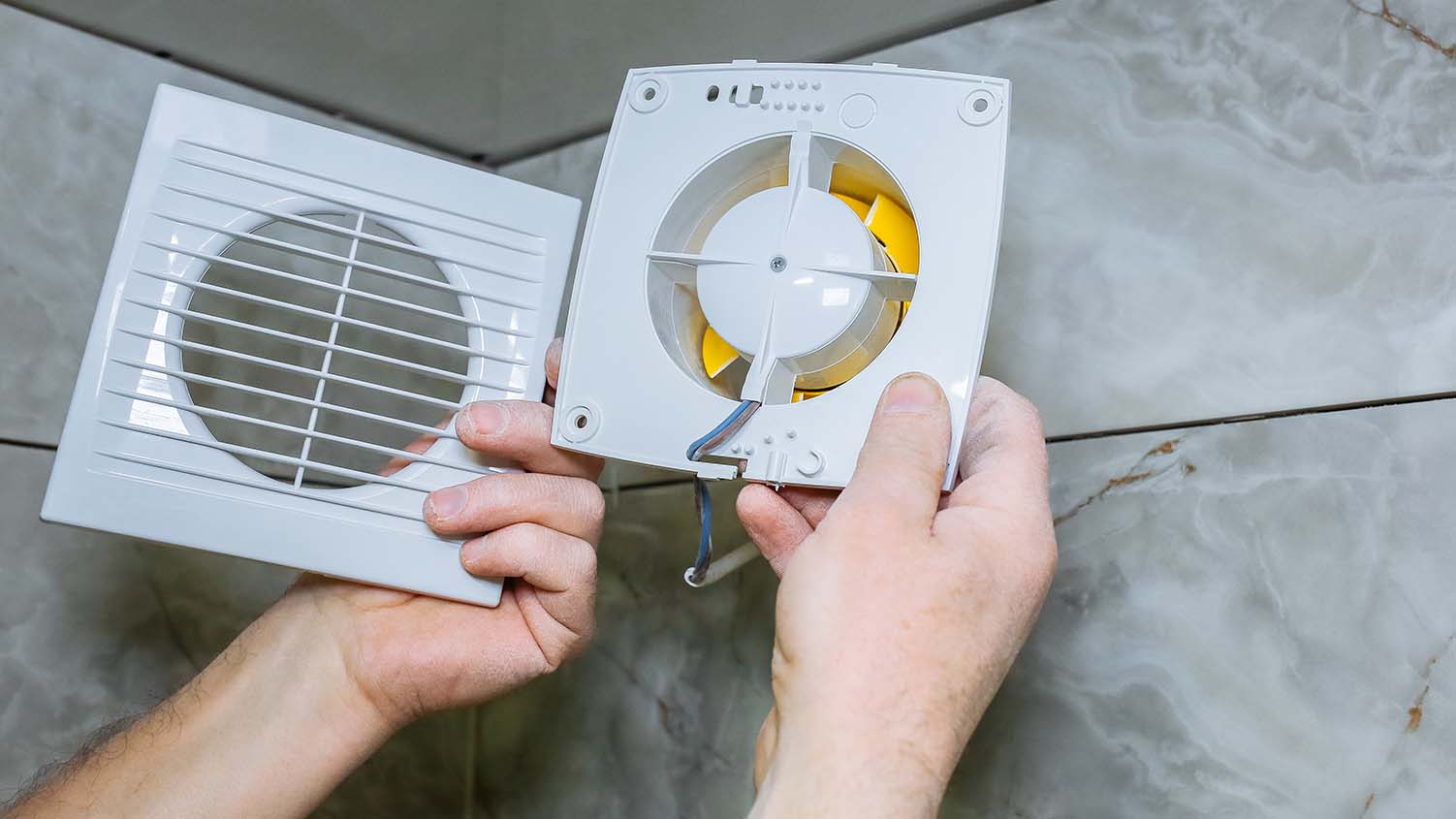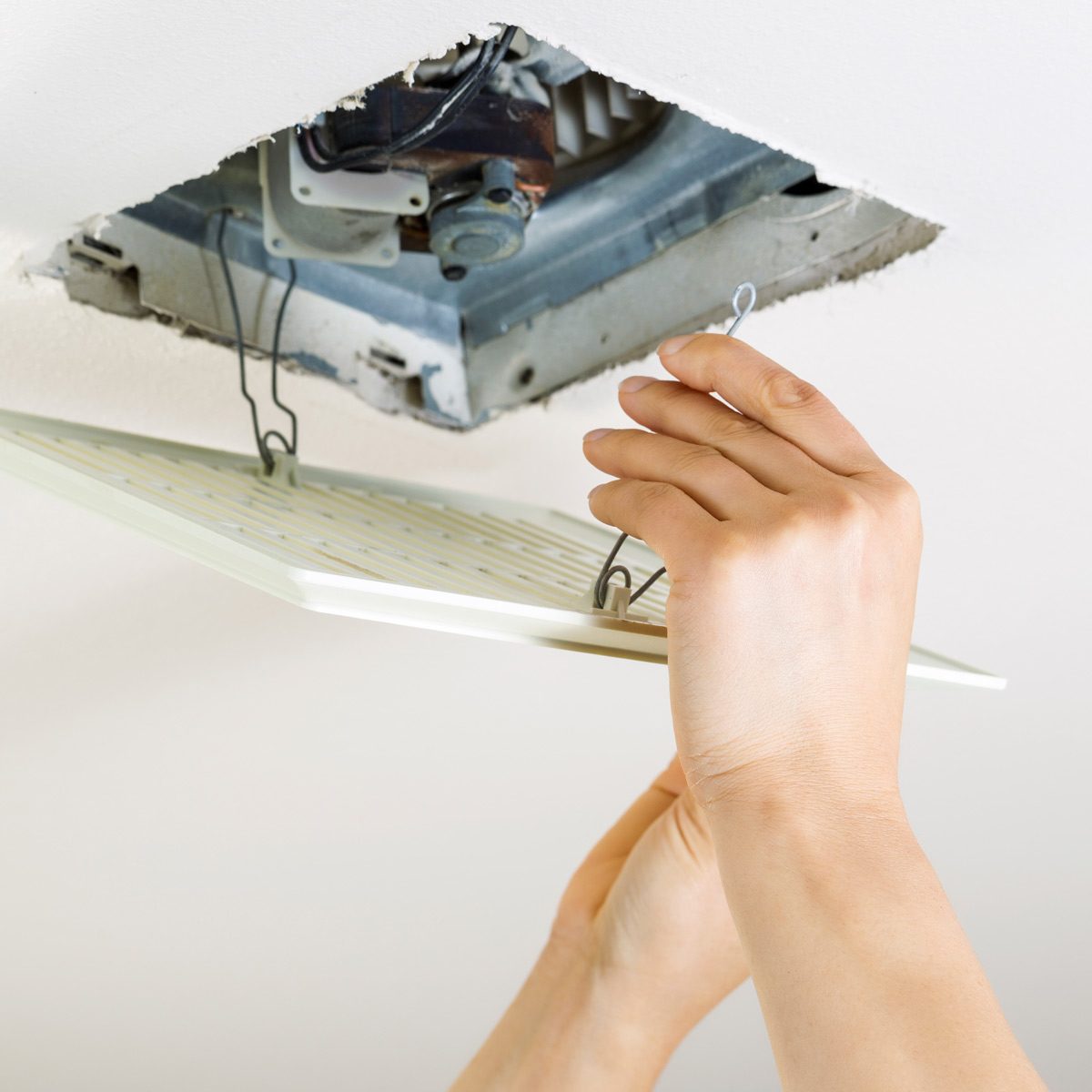Moisture Removal Mechanisms

Moisture in bathroom exhaust fan – Excess moisture in bathrooms can lead to mold, mildew, and other problems. Bathroom exhaust fans are designed to remove this moisture from the air, but they use different methods to do so.
The most common type of bathroom exhaust fan is the axial fan. Axial fans use a propeller to move air in a straight line. They are relatively inexpensive and easy to install, but they are not as efficient as other types of fans.
Centrifugal fans are more efficient than axial fans. They use a rotating impeller to create a centrifugal force that moves air in a spiral pattern. This type of fan is more expensive than an axial fan, but it is also more powerful.
As the bathroom exhaust fan hums, gently drawing moisture away, the air transforms, becoming lighter and clearer. This invisible dance of moisture removal reminds me of the soft glow of a farmhouse mirror , its weathered frame whispering tales of time and patina.
Just as the mirror reflects light, the exhaust fan reflects the essence of a well-ventilated space, ensuring that moisture is kept at bay, leaving behind a refreshed and inviting sanctuary.
Inline fans are another type of bathroom exhaust fan. Inline fans are installed in the ductwork of the bathroom exhaust system. They are more expensive than axial and centrifugal fans, but they are also more powerful and efficient.
Moisture in bathroom exhaust fans can be a problem, leading to mold and mildew growth. To prevent this, it’s important to choose a fan that is powerful enough to remove moisture from the air. One excellent option is the emma bathroom extractor fan , which features a high-powered motor and a sleek, modern design.
With its efficient operation, the emma bathroom extractor fan ensures that your bathroom stays dry and fresh, preventing the buildup of moisture that can cause unpleasant odors and damage to your bathroom.
Effectiveness of Various Moisture Removal Technologies
The effectiveness of a bathroom exhaust fan depends on a number of factors, including the fan size, the airflow rate, and the ventilation design. The following table compares the effectiveness of different moisture removal technologies.
| Technology | Effectiveness |
|---|---|
| Axial fan | Low |
| Centrifugal fan | Medium |
| Inline fan | High |
Factors Influencing the Efficiency of Moisture Removal
The following factors influence the efficiency of moisture removal:
- Fan size: The larger the fan, the more air it can move.
- Airflow rate: The higher the airflow rate, the more moisture the fan can remove.
- Ventilation design: The design of the ventilation system can affect the efficiency of the fan. A well-designed system will allow the fan to move air more effectively.
Ventilation Strategies for Moisture Control

Proper ventilation is crucial in managing bathroom moisture levels, preventing mold growth and ensuring a healthy indoor environment. Various ventilation strategies exist, each with its advantages and suitability for different bathroom sizes, layouts, and usage patterns.
Natural Ventilation
Natural ventilation relies on airflow through open windows, doors, or vents. It is an energy-efficient and cost-effective option, but its effectiveness depends on outdoor conditions and may not be sufficient in humid climates or during peak usage times.
Mechanical Ventilation
Mechanical ventilation uses exhaust fans to extract moisture-laden air from the bathroom. Exhaust fans can be wall-mounted or ceiling-mounted, and they come in various sizes and capacities. They are more effective than natural ventilation but require electricity to operate.
Hybrid Ventilation Systems
Hybrid ventilation systems combine natural and mechanical ventilation. They typically use a base level of natural ventilation supplemented by mechanical ventilation when needed. Hybrid systems offer flexibility and energy efficiency, but they can be more complex and expensive to install.
Selecting the Appropriate Ventilation Strategy, Moisture in bathroom exhaust fan
The choice of ventilation strategy depends on factors such as:
– Bathroom size and layout
– Number of occupants and frequency of use
– Climate and outdoor conditions
– Energy efficiency and cost considerations
In general, larger bathrooms with high usage patterns require more robust ventilation systems. Hybrid systems are often suitable for moderate-sized bathrooms in humid climates. For smaller bathrooms with limited usage, natural ventilation may suffice.
Fan Selection and Installation Considerations: Moisture In Bathroom Exhaust Fan

When selecting a bathroom exhaust fan, consider its CFM (cubic feet per minute) rating, which determines the volume of air it can move. For a standard bathroom, a CFM rating of 50-80 is usually sufficient. Also consider noise level, as quieter fans are more comfortable to use. Energy efficiency is another factor, with ENERGY STAR-certified fans offering significant energy savings.
For proper installation, follow these steps:
1. Determine the fan’s location and mark the ceiling.
2. Cut a hole in the ceiling using a drywall saw.
3. Connect the fan’s wiring to the electrical box.
4. Secure the fan to the ceiling using screws.
5. Seal the fan’s edges with caulk.
6. Install the fan’s cover.
Common installation challenges include:
– Insufficient ceiling space: Use a slimmer fan or relocate the fan.
– Improper wiring: Ensure proper connections and consult an electrician if needed.
– Air leaks: Seal all gaps around the fan with caulk or weatherstripping.